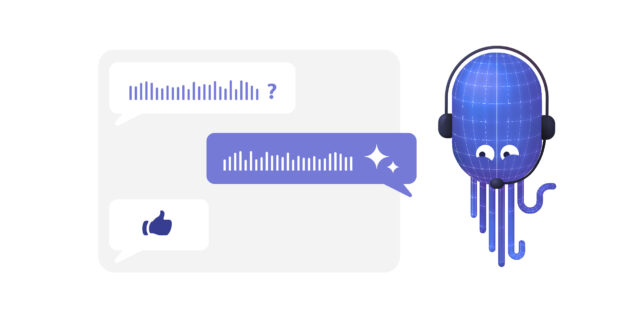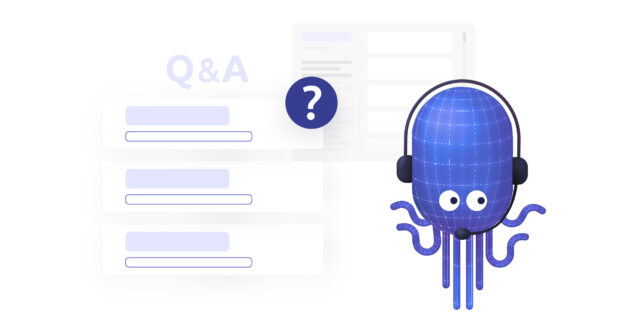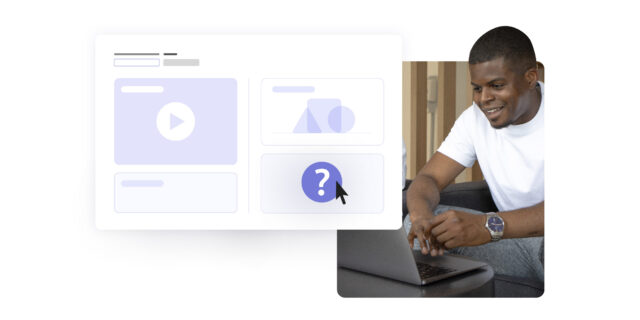Customer Self-Service
With customer self-service, customers can resolve their issues independently and at any time. Explore the most effective self-service channels and how to implement them while maintaining an excellent customer experience.
What Is Customer Self-Service?
Customer self-service refers to an approach that enables customers to get assistance without human intervention. Self-service channels include chatbots, voicebots, FAQs, and community forums.
By empowering customers to solve their own issues, self-service helps reduce the volume of incoming calls.

Benefits of Customer Self-Service
Optimizing Agents' Time
Self-service relieves agents of repetitive, low-value tasks by empowering customers to handle certain issues themselves. This allows agents to focus on higher-value activities, such as customer retention, telemarketing, and addressing complex problems.

24/7 Availability
For customers, the main advantage of self-service is the ability to get instant answers at any time. If they can’t call customer service during the day or encounter an issue in the evening, self-service ensures they receive assistance without delay. When human intervention is required, agents can step in during the contact center’s regular hours.

Challenges of Customer Self-Service
Implementing the Self-Service Journey
Before launching a self-service strategy, it’s crucial to analyze the customer journey in depth. This ensures self-service is offered at the right moments. Since self-service relies on automated solutions like voicebots, chatbots, and FAQs, these tools need to be configured properly, with clear escalation paths to human agents when necessary.
Implementing self-service also involves costs, such as investing in the right tools and creating robust self-service resources.
Customer Frustration
When implementing self-service, keeping an eye on customer satisfaction (CSAT) is essential. Poorly designed self-service solutions can frustrate customers and lower their satisfaction levels.
This happens when the self-service system fails to understand the customer’s request or doesn’t provide a viable solution. Always offer the option to connect with an agent if the customer doesn’t find what they need.
Using Customer Self-Service
Handling Recurring Requests
Customer self-service is especially effective for recurring requests that don’t require an agent’s intervention. When implemented correctly, it also enhances customer satisfaction by providing instant responses at any time, rather than making customers wait for an agent. Examples include resetting forgotten passwords, tracking orders, and answering frequently asked questions (FAQs).

Providing Customers with Information
In some cases, customers prefer accessing information independently without speaking to an agent. This might include consulting tutorials or accessing practical details such as business hours or delivery times. Channels like voicebots, chatbots, and FAQs help deliver this information interactively and autonomously.

How to Implement Customer Self-Service ?
FAQ
What is the difference between customer self-service and traditional customer service?
Customer self-service allows customers to resolve simple, frequent issues on their own using automated tools like FAQs, chatbots, and knowledge bases. In contrast, traditional customer service involves direct interaction with a human agent for more complex queries. For an optimal customer experience, it’s best to combine self-service with other channels such as phone calls, emails, and social media.
What channels can be used for customer self-service?
Customer self-service spans a variety of channels, including chatbots, voicebots, FAQs, knowledge bases, and community forums. When starting a self-service strategy, it’s advisable to begin with a limited number of channels and expand them based on customer needs.
How can requests be redirected between self-service and human agents?
To ensure effective customer service, self-service should complement human agents. Transfers are common—for instance, a customer may use a self-service channel first and then be redirected to an agent for more complex inquiries. An omnichannel solution helps ensure a smooth transition: all channels are managed from a single interface, and agents have a comprehensive view of the customer journey, including interactions on self-service channels.
How can I guide my customers in using self-service?
For a self-service strategy to succeed, customers need to be informed about the available channels. It’s crucial to avoid making them feel abandoned. Clearly explain how self-service works and highlight the benefits, such as providing immediate responses anytime, day or night.